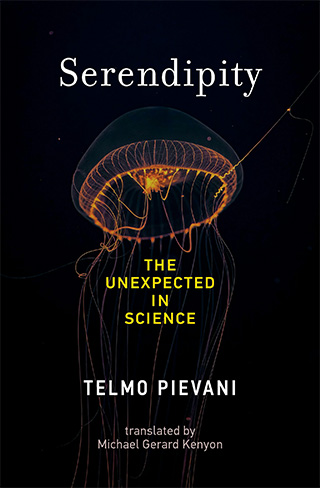Is Discovery Inevitable or Serendipitous?

We are in the early 1900s, and a French chemist (also an artist and decorator), Edouard Benedictus, has a banal accident in the laboratory: He drops a flask. Only this time, it doesn’t shatter. The pieces of glass remain stuck together, like a mosaic. Intrigued, Benedictus delves deeper and realizes there was a solution of collodion inside the flask, which, once evaporated, had deposited on the surface of the glass like a film and was holding the pieces of glass together. He had unknowingly invented shatterproof glass. But he put it inside a cupboard and only retrieved it later, when the car market had created the problem for which he had already found the answer — as if invention were the mother of necessity, and not vice versa.

Such moments of serendipity reveal the unpredictable nature of innovation. Yet, even in cases where chance plays a role, as in Benedictus’s story, the broader question remains: Are such discoveries truly born of luck, or were they somehow “in the air,” waiting for the right person to seize them?
Come off it, the skeptic will blurt out, but what serendipity? In one way or another, all the discoveries listed to date would have been made by other people. If the time was ripe in conceptual and technological terms, someone would have got there sooner or later. Anesthesia would have been discovered anyway, and someone else would have invented Post-it notes. This is the used and abused contention of theories that were “in the air” almost as if they were ghosts floating in some time period just waiting to be seized by someone. Independently and in parallel, Charles Darwin and Alfred R. Wallace (the latter 15 years behind Darwin) arrived at the theory of evolution by natural selection, both counting on similar data, such as reading Thomas R. Malthus, observing the distribution of species on islands, and so on. They added many different nuances to the theory, but the coincidences of thought were astonishing.
Even in the 19th century, during the frenetic international competition to decipher the molecular structure of DNA, in the research on anesthetizing gases, and in many other cases, the net impression is that the goal was close and the solution just around the corner. This phenomenon, which also exists in biological evolution, is called convergence: two non-closely related species develop similar functional adaptations, such as the echolocation of bats and some species of bird. This occurs because the environment poses similar survival problems to both (orientation in the dark during flight), namely similar selective pressures. This is an important clue that can help explain why this dynamic also exists in scientific knowledge: There are similar selective pressures (a research problem and the observational means needed to achieve it) and different research groups that compete to come up with the solution(s).
All scientists are standing on the shoulders of the giants who have gone before them, and there is objectively a cumulative element in science.
And indeed, the abovementioned cases are a little different from many of the serendipity stories reported throughout “Serendipity” because, in all of those situations (and in many others), there was an intentional race to solve a defined problem. But if we analyze the steps undertaken that led to the result, we can see that there were in fact some serendipitous elements (Darwin and Wallace both reading Malthus at the right time, the crystallographer Donohue — whose expertise in hydrogen bonds directly led Crick and Watson to correct their model of nucleotide base pairs and discover the double helix structure — in Watson’s laboratory, etc.). The overall dynamic was not serendipitous, though. This must also be said to emphasize that, naturally, not all processes of discovery are serendipitous. Yet is it really possible that all discoveries were in the air?
Let us assume for a moment that this is true and that the most luck can do is speed up the inevitable. All scientists are standing on the shoulders of the giants who have gone before them, and there is objectively a cumulative element in science. Nonetheless, at some point and in the right circumstances, it was the unknown scientists, not the giants, who managed to see a little farther. Where the intentionality of a discovery is more predictable and expected than others, it does not mean in these cases that the role of the individual scientist and the context is in any way less important. Some discoveries have their own spontaneous force and are more likely to emerge, but their realization still depends on the knowledge of the individual scientist or group of scientists, and contingency plays an important role as well (what would Darwin and Wallace have discovered without the highly serendipitous opportunities that arose through their travels?).
No one knows how many different routes were available to arrive at the same discovery. In any case, we have no counterproof, and the danger of hindsight (which makes something that did not seem necessary before become significant after, so transforming chance into destiny) is always lurking just around the corner. When our minds align a procession of coincidences that have made a surprising outcome possible, they immediately come to the conclusion that a mysterious force is responsible for this succession of events. They say that it cannot be a coincidence and hence the discovery was in the air. The mysterious characteristics of the universe also manifest themselves to the scientist in the form of strange coincidences.
To avoid this teleological version of the history of science, there is an opposing abductive argument. It cannot be considered proof but rather a clue that directs us toward our favorite serendipity. It is no coincidence that it was the unknown scientist and not the giant who managed to see farther — that is, who opened up new frontiers of knowledge. Continuing our metaphor, we can say that the mind of the giant was imprisoned by prior knowledge and so trapped within the framework of established habits, research questions, and established methods. Conservatives will thus be more likely to make predictable and deliberate discoveries that are possibly just as important, but they will remain in the vicinity of the known because they are less inclined to listen to the unexpected.
The new, little-known scientist, on the other hand, will have seen farther because they will in one way or another have been able (intentionally or much more often serendipitously) to break free of the chains of established knowledge, possibly even betraying it a little. And so it will have been possible for them to imagine other worlds. This suggests that it will be innovators, with their prepared minds, who have a better chance of intercepting serendipitous discoveries, namely that are irregular and unexpected, or even disruptive. Turning the argument around, it is more likely that the scientific discoveries with the greatest impact and magnitude have been and will be serendipitous.
Telmo Pievani is Full Professor in the Department of Biology at the University of Padua, where he covers the first Italian chair of Philosophy of Biological Sciences. A leading evolutionist, science communicator, and columnist for Corriere della Sera, he is the author of, among other books, “Imperfection” and “Serendipity,” from which this article is adapted.



